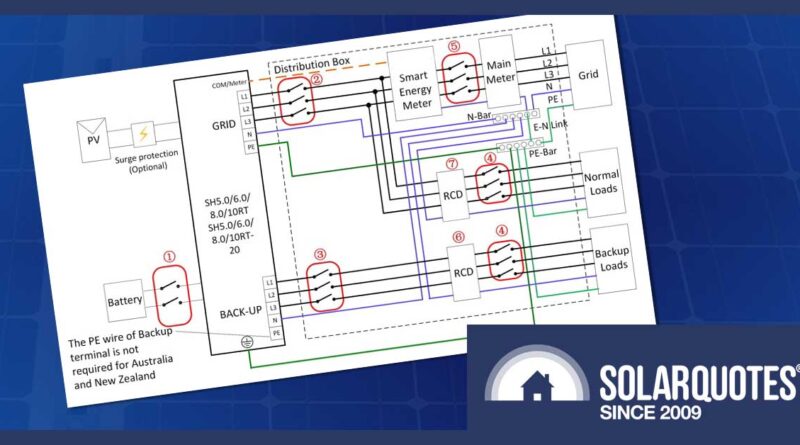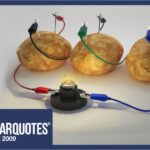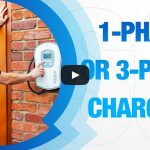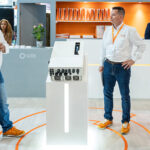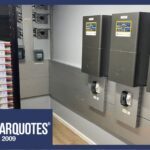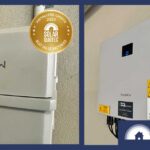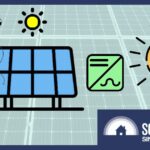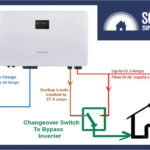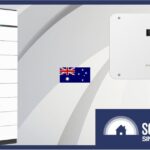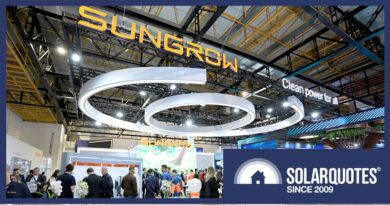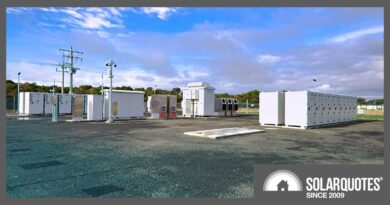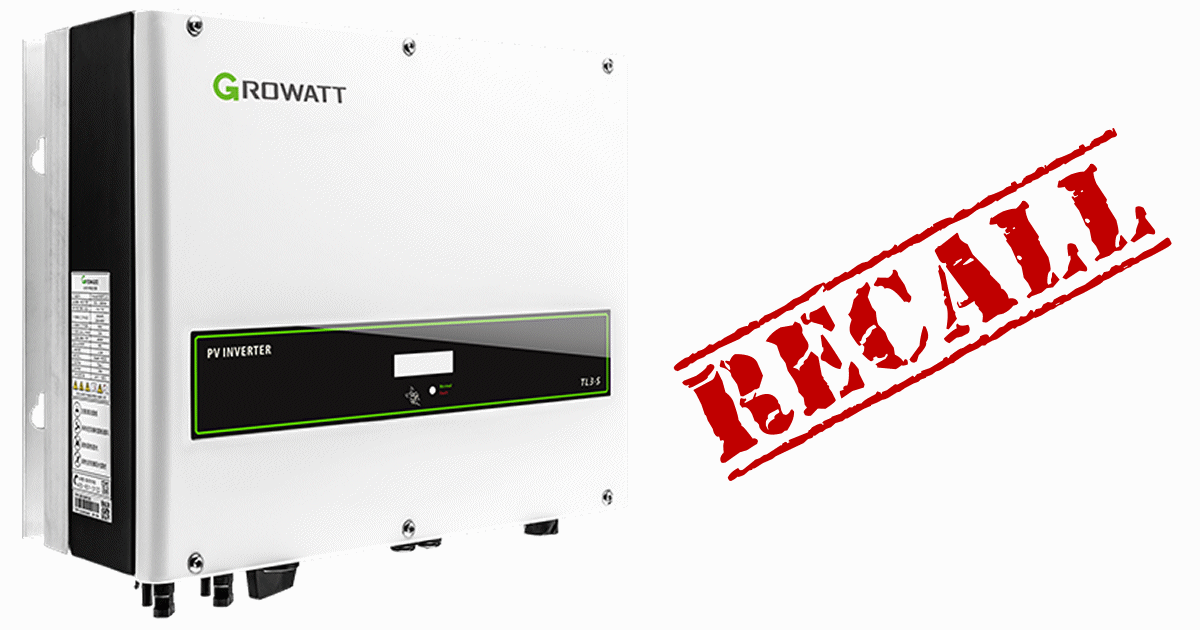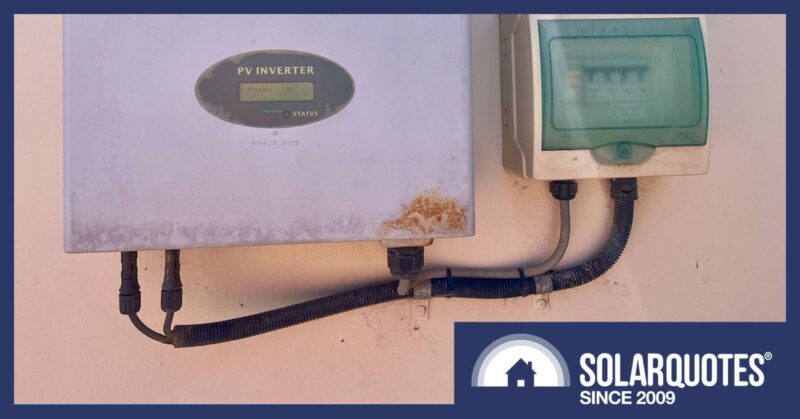Want 3-Phase Battery Backup? Here Are Your Options In 2024
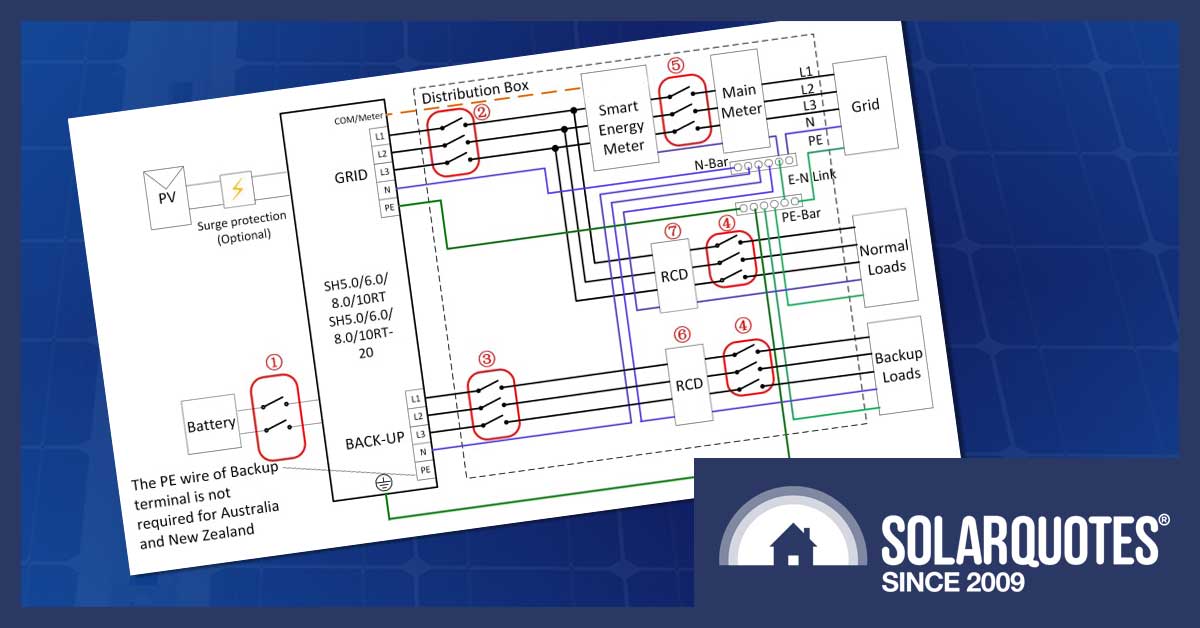
3 phase wiring diagram for full home backup from Sungrow
So you have a 3-phase supply to your place, and you’d like solar with battery backup?
Pickings were slim in 2018 when we last reviewed the situation. The good news is, since then, many new hybrid inverter models have entered the market, and full 3-phase backup is now possible without dropping crazy amounts of cash.
It might be worth brushing up on the terminology and some of the basic principles of energy storage if you’re unfamiliar with the jargon, but for this article, I’ll dive into 3-phase battery backup more specifically. It’s a long read because more phases means more complexity.
You Probably Only Need Single-Phase Backup
Three-phase loads are generally large appliances like;
- Ducted air conditioning
- Bore pumps
- Workshop machinery
- Large solar inverters
- and EV charging, too
You need a large and expensive home battery to meet these challenging loads without the grid.
Everything else in your house is single-phase, and in many cases, even large air conditioners can be single-phase units. Many EVs (including all BYDs) only have single-phase charging too.
So, if you just want the fridge, lights and WiFi to work in an outage, then you only need a single phase backed up. In fact, single-phase hybrids invariably have better surge capacity when running in off-grid mode, so if you have a rainwater pump to fill the kettle and flush the loo, then a 3 phase hybrid inverter might not be as capable.
- The greatest choice in AC-coupled and DC-coupled hybrid inverters is in single-phase models.
- It’s an efficient design to have a 3-phase house with solar and only back up one of the phases, with all your essential loads on that phase1.
Perhaps Wiring Will Decide Your Needs.
Where you may need 3-phase backup from a battery is if you have a specific 3-phase load, like a fire pump, or if the wiring in your premises covers different floors. Segregating backup circuits can be difficult or impossible if 3 phases feed three different buildings, for instance.
If you already have a legacy 3-phase solar inverter, then integrating that will require careful design and equipment selection from your installer. Some hybrid inverters play well with others, but many will not; compatibility can be case by case, so get your expectations documented in the quote.
Armageddon Proofing
If money is no object and you want to treat the grid with contempt then you’ll use three Selectronic SpPros and a raft of other complimentary equipment. A bespoke design, class 6 battery from a specialist installer all means you’ll get no change from $100,000 by the time the shouting has died down. There’s a good chance your existing Fronius or ABB/Fimer solar inverters will be compatible though.
In a similar vein, soon there will be another option available for remote area jobs. A very well-respected Australian firm has developed the Xess One and has some promising specifications.
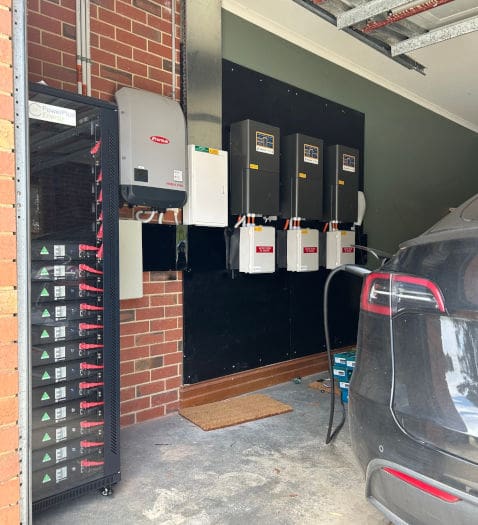
Charging an EV with a 3-phase Selectronic SpPro, PowerPlus batteries & Fronius solar inverter. This homeowner will power through Armageddon, no problem (unless it’s a nuclear winter).
Powerwall Is Popular But Not Plausible
People love the Tesla Powerwall. Customers and installers alike know they work really well. However, 3 phase is Tesla’s Achilles heel. In the US, there simply isn’t any demand for 3 phases (until you get into heavy industry), so Tesla doesn’t design for it. 110 V AC house wiring, fluid ounces, acres, feet and now NACS connectors for EV charging,… the freedumb eagles are just weird.
It’s not that you can’t have a Powerwall on a 3-phase supply; many do, and they enjoy lower bills. However when the grid fails, you have single-phase backup only.
Tesla simply doesn’t form a 3-phase 120° synchronised grid.
You can have three Powerwalls backing up three separate single-phase supplies during an outage, but they will not work together to run a synchronous 3-phase load, and they cannot charge from a 3-phase solar inverter (you’ll need 3 x single-phase solar inverters or microinverters).
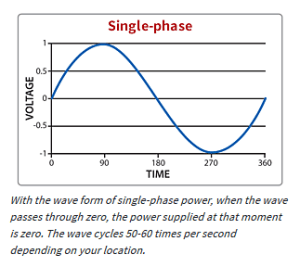
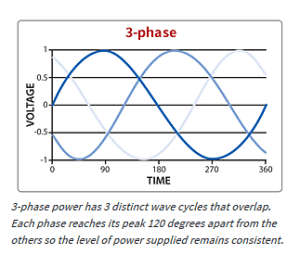
Proper 3 Phase backup With Fronius Gen24
Available in a range of sizes up to 10kW, Fronius offer class leading surge capacity of 3.7kW per phase and modular battery capacity from stacks of BYD batteries. We have outlined many details previously, but it’s worth noting these machines work in parallel with your grid supply. They have a backup box arrangement to disconnect the mains supply, so there are some inherent features.
- As a DC-coupled hybrid they can black start if the battery runs flat overnight
- All the circuits in your house will be backed up (unless they’re segregated in the switchboard)
- If the inverter fails, the house carries on as normal. No emergency changeover switch is needed.
- There is a 30-ish second delay in changeover when the grid fails. I call it a feature because it’s an unmissable analogue signal, a warning that you need to back off consumption and conserve energy
- During an outage, the Fronius unit will form a supply at 53Hz. This is a deliberate action to make sure that no other inverter will stay online. Fronius will not tolerate other solar supplies.
- Some appliances may not tolerate the Fronius 53Hz output 2
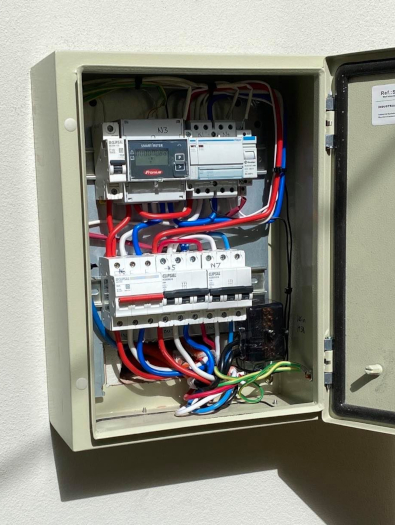
3 Phase Gen24 will need a “backup box” like this inside or near the switchboard. image credit Jae Taylor
Pfft; SolarEdge Is A Bust, Enphase Are Non-starters
Available internationally and offered here for a short time, the 3-phase SolarEdge solution was a false start. They do offer single-phase parallel hybrids, but until we get the Australian Standard for inverters, AS4777 rewritten, Solar Edge 3 phase isn’t an option.
The Enphase 5p battery and system controller only offer single-phase backup.
Great Value 3-Phase Backup: Sungrow SH5-10RT
From up-and-coming to a solid contender, Sungrow has some persuasive technical reasons for 3-phase customers. They currently offer a range up to 10kW, but we understand a 15kW unit is coming soon. Sungrow has a really well-resolved stackable battery in 3.2kW increments. As a DC-coupled hybrid, they can black start if the battery runs flat overnight.
They can also run more solar capacity on the backup side. An extra solar inverter will help run appliances, help recharge the battery and help meet surge loads (if there’s sunshine, of course). If this is a Sungrow unit it’ll marry up in the monitoring platform, but other brands and models can be used successfully, with the Sungrow Hybrid shifting frequency to control generic inverters.
Sungrow is a series hybrid, so all the backup loads are connected through the inverter. This means when the grid fails you probably won’t notice the changeover. It’s not a true uninterruptible supply; they sometimes drop out, but generally, everything stays on.
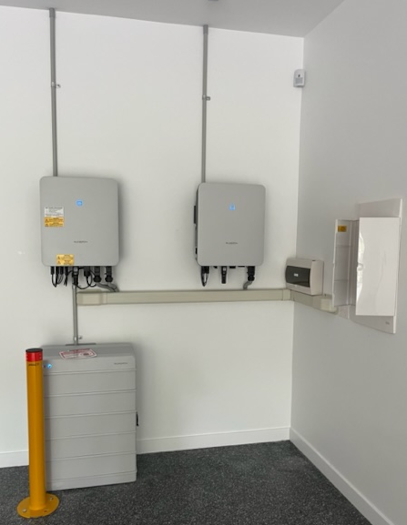
Sungrow makes some solid gear.
There are some disadvantages to the series hybrid architecture Sungrow have chosen:
- Firstly, the backup circuit will only pass through what it’s rated for.
Whether the grid is available or not, the inverter becomes the limiting factor for anything downstream. - More importantly, if something goes wrong, the inverter fails for any reason, and you really need a changeover switch to restore grid supply to your essential circuits. For three phases, that means you need a lot of room in the switchboard.
- Frequency shifting can cause other interference, with random appliances being upset.
Perfectly GoodWe For More Grunt
There is already a 15 to 29.9kW 3ph hybrid on offer from GoodWe. As a series hybrid, they share the same fundamental advantages & liabilities of the Sungrow solution and models. Important to note, though, is that while GoodWe offer a modular battery stack, they do not offer a warranty on expanding your battery at a later date.
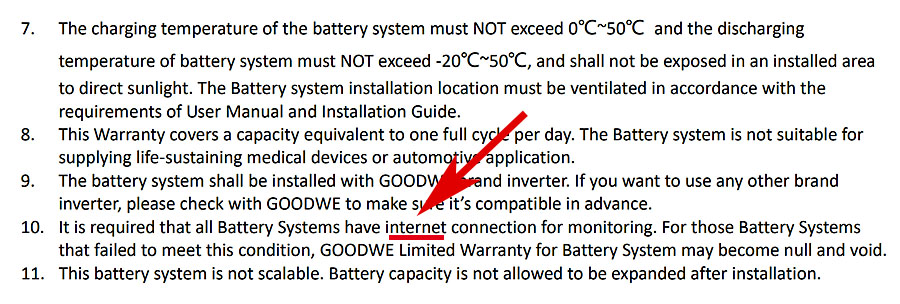
It’s worth reading the fine print for any battery
Pragmatic Redback
Scratch the paint off a Redback unit, and you’ll find more GoodWe hardware, which isn’t a bad thing. The principal difference is the monitoring software, integration and support come from Brisbane. Not only does this mean you have a 10-year warranty, curiously with no other caveats applied, but you also have native integration for flexible export connections, which are increasingly becoming the norm for Australian networks.
Power From Deye or NoArk
Deye inverters are new to market in Australia, and while Deye (pronounced DAY, I’m told) is a large international outfit, choosing a unit with a NoArk sticker on it means you get support from an office in Australia.
These inverters are a crossover between a grid hybrid (high voltage, package engineered, class 4 or 5 BESS) and an “off-grid” inverter with a generator input connection. Some models even support 48-volt nominal batteries, which for a 3-phase all-in-one box is something nobody else offers.
Punting On Cheaper Options
If you’re on a budget and enjoy a punt, Solax, is still available, with gear that has never impressed me, but still being there to honour a warranty is actually a credit to them. Growatt, SAJ, Solis, all appear to have 3 phase hybrid products, but working out if they’re approved might be another matter. Searching the CEC list is made difficult when Solis & SAJ simply don’t appear as brands, so try Ginlong and Guangzhou Sanjing for better results.
Putting In For A Quote?
- You may need an electrician to work out exactly what part of your house uses which phase
- 2 phase properties need two single-phase inverters but might share a 3-phase consumption meter
- DC-coupled hybrids allow you to add more solar than is usually permitted, but they can be set up to work like an AC-coupled battery with existing solar
- Network connections can become complex if you already have solar and are subject to limits of 10kW of inverter per phase.
- Flexible or Dynamic connections may limit your choices in South Australia, Queensland & soon Victoria – not all inverters are compliant
- If you don’t have a specific 3 phase load, then one, two or three single-phase battery inverters may be a solution
- Single-phase inverters offer more surge capacity for things like pumps and fridge motors.
Footnotes
- Just be aware that – if you want your solar panels to work in a blackout, you should use 3 x single-phase solar inverters or microinverters, not a 3-phase solar inverter ↩
- I’ve heard of frequency shift causing random minor malfunctions, a certain model induction stove, a TV remote, a coffee machine pump ↩
Original Source: https://www.solarquotes.com.au/blog/3-phase-battery-backup/

